
Read on to find out why.
Poinsettias are the most popular Christmas plants, hands down. They’re so popular that they make up ¼ of all potted plant purchases every single year. That’s pretty impressive for a plant that’s only sold for six weeks out of the entire year.
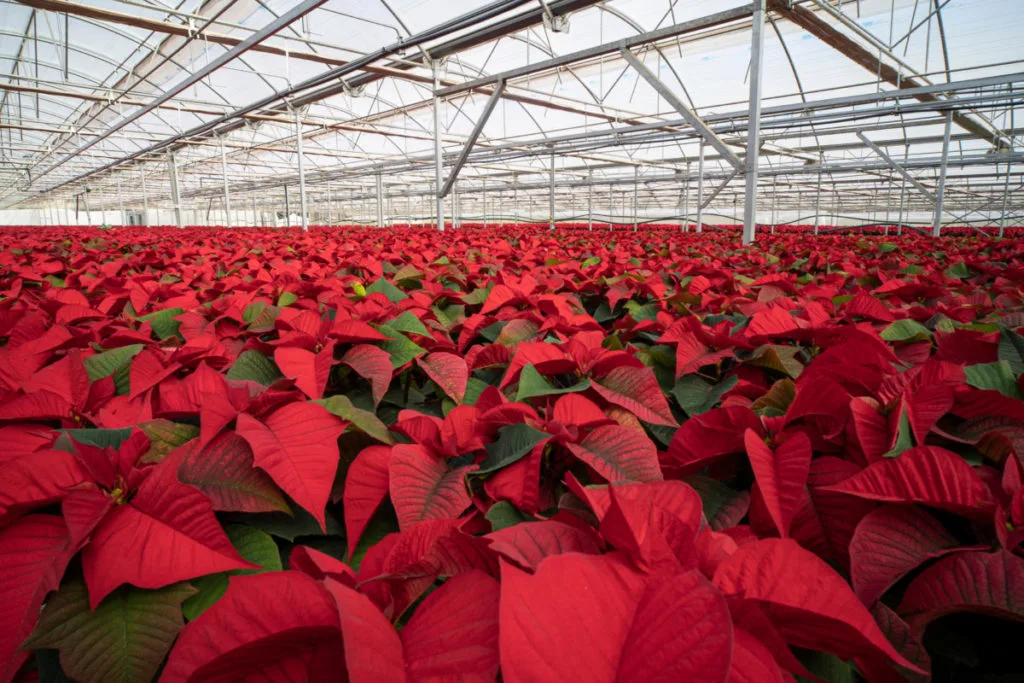
It’s no wonder they’re everyone’s favorite holiday plant with their cheerful red foliage and bushy stature. You only need one to brighten up a whole corner of the room.
Yet, these beautiful plants often end up on the curb next to the Christmas tree at the end of the season. But there’s no need to toss them out. Poinsettia can be trained to regrow and turn red again the following season.
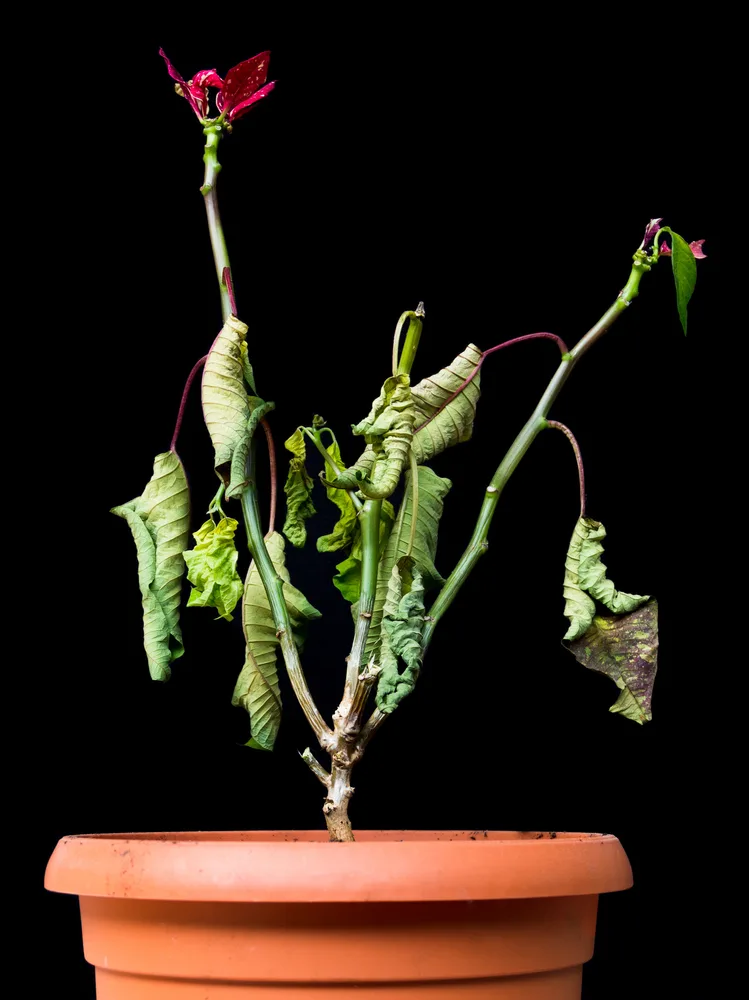
I’ve detailed everything you need to know to keep your poinsettia going strong long after Christmas, and more importantly, how to bring it back to its full red glory next December.
You can read that article here.
But what if I told you you could also propagate your poinsettia if you keep it alive past Christmas too?
Not only would your parent plant be ready for the holidays the following year, but you could have plenty of new poinsettias to decorate your home with too.
There is one small catch, though. Depending on your poinsettia, you may not be able to propagate it legally.
I know, it’s funny to think that making more of a plant you bought and paid for could be breaking the law. But we’ll talk more about that later.
In the meantime, you’ve got to keep your poinsettia alive over the holidays to be able to take cuttings later on. And Lindsay gives us all the details you need to do just that. She not only gives great tips on how to keep your poinsettia looking great for Christmas, but she gives you a quick guide on general poinsettia care.
22 Tips to Keep Your Poinsettia Looking Great This Holiday Season & Beyond
But Tracey, what about that whole breaking-the-law-by-propagating-poinsettias thing you mentioned?
You may have noticed that poinsettias have changed quite a bit over the years.
It used to be that every store carried the bright red poinsettias we all know and love. And then one year, there were cream-colored poinsettias to choose from too, and soon after that, blushing pink poinsettias joined the mix.
You can now find spotted poinsettias, poinsettias that have variegated leaves; burgundy, pink, yellow, peach and green poinsettias too. And it’s not only the colors that are changing; it’s the shape. You can find poinsettias with leaves that are curly or wavy or even tiny to show off the tiny flower at the center of the bracts.
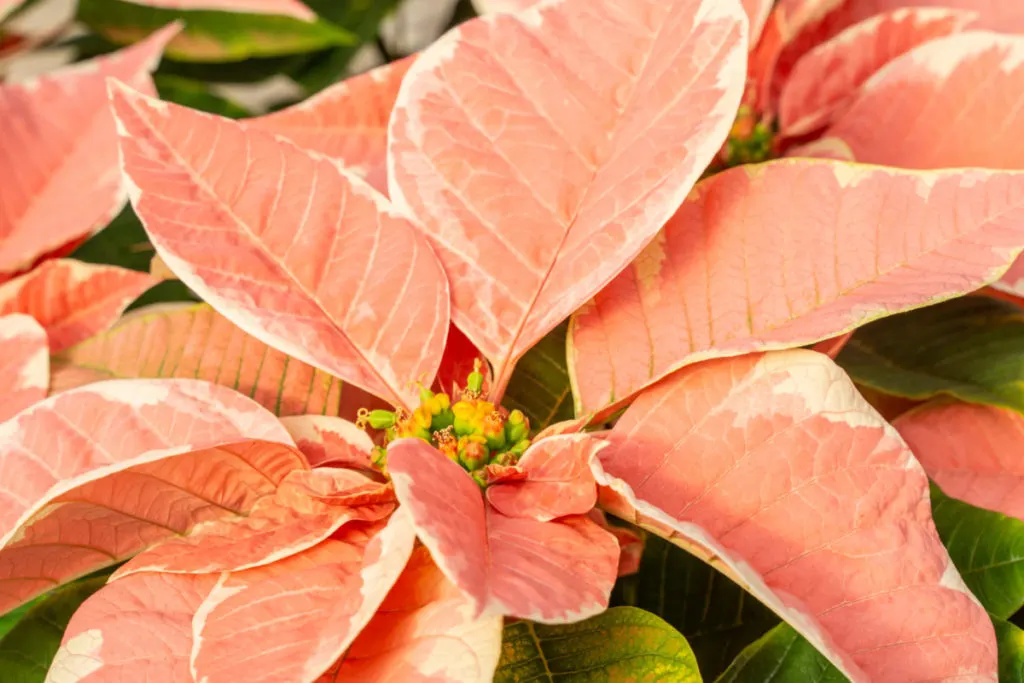
These fantastical Christmas plants are created through careful breeding to achieve these specific results.
And like those hybrid tomatoes you grow in your garden every year, if you were to grow one of these fancy poinsettias from the seed of the parent plant, the new plant wouldn’t be the same.
You may be surprised to find the poinsettia you bring home for Christmas every year is a cutting from a parent plant. Your poinsettia is a clone.
Many of the poinsettia varieties for sale each Christmas are covered by plant patents.
After going to so much trouble to design and breed these beautiful poinsettia varieties, they’re often patented. This patent makes it illegal to reproduce the plant through cuttings and sell it or use any plants grown from illegal cuttings.
The original poinsettia plant introduced in the states in 1820 was patented for over a hundred years. But these days, plant patents only last for twenty years. Right now, there are well over a hundred varieties of poinsettias with patents.
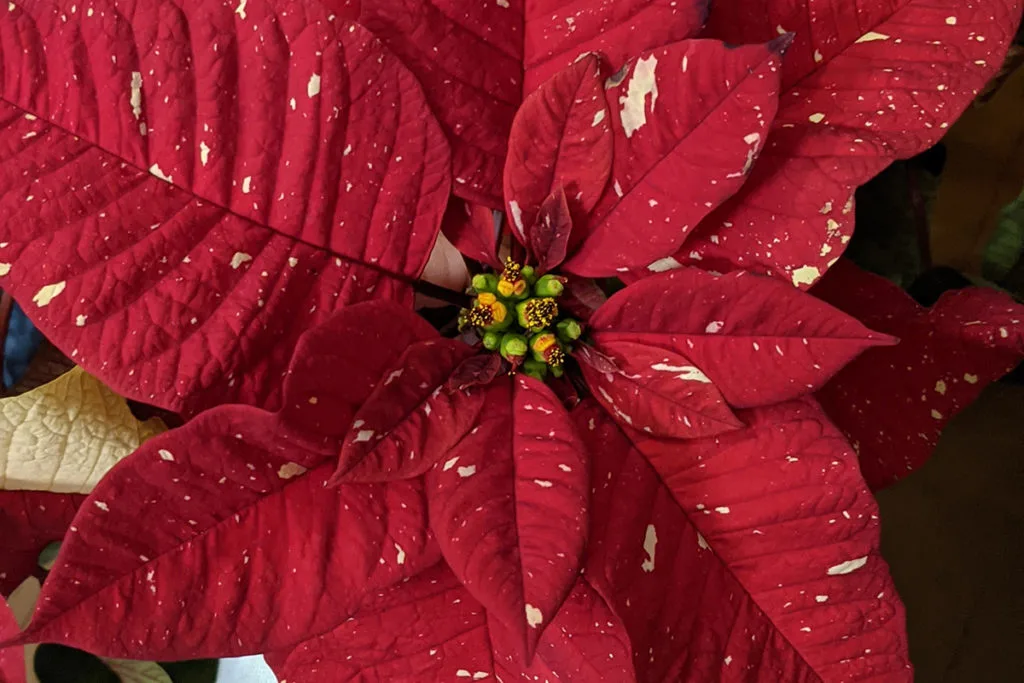
How do I know if my poinsettia is patented?
All poinsettias sold that hold a patent are labeled on the pot wrapper. Check the decorative wrapper that covers the nursery pot; there will usually be a sticker with the bar code and information about where the plant was grown and for what nursery. If the plant has a patent, it will say so on this sticker.
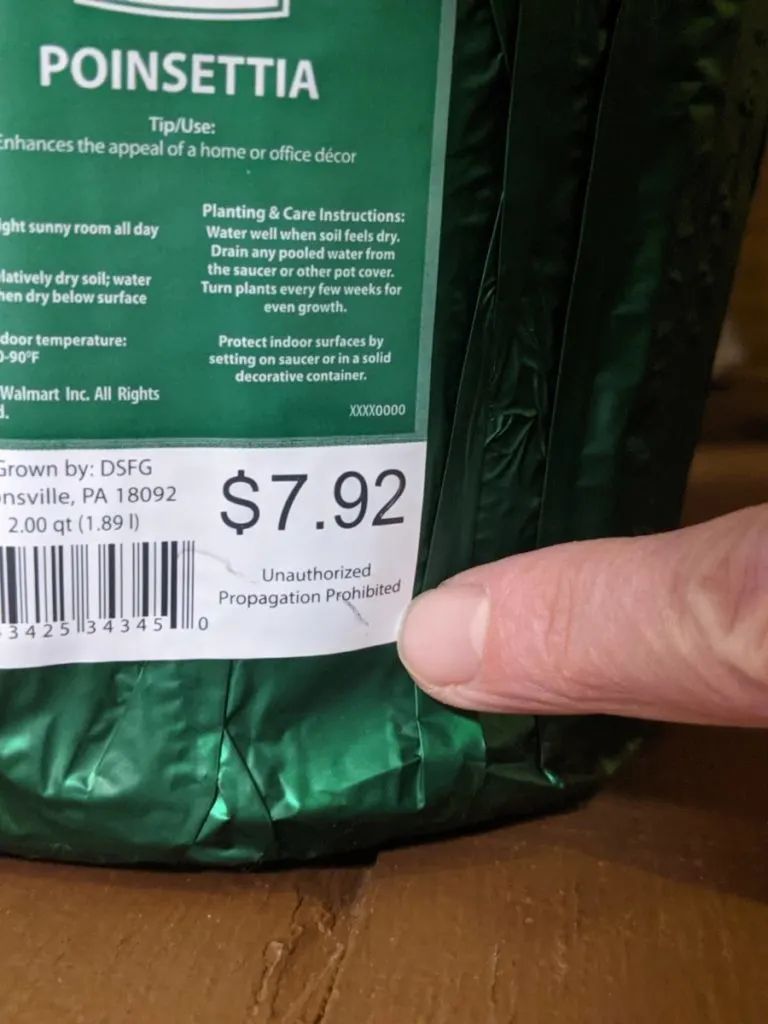
If your plant is patented, don’t worry, it’s still pretty easy to find poinsettias that are no longer under a patent in stores. And you can propagate these varieties to your heart’s content. So, let’s learn how to propagate poinsettias.
How To Propagate A Poinsettia – Step-By-Step
New Growth is Important
While you may be tempted to take a few cuttings after Christmas and poke them in the soil, that’s not going to get you very far.
Your poinsettia has just spent the last couple of months pouring all of its energy into reproduction. Those colorful leaves we all enjoyed at Christmas were produced to attract pollinators to the tiny flowers at the center of each cluster of bracts.
Let Your Plant Rest
After the holidays, the poinsettia will continue to drop all of its leaves; this is completely normal.
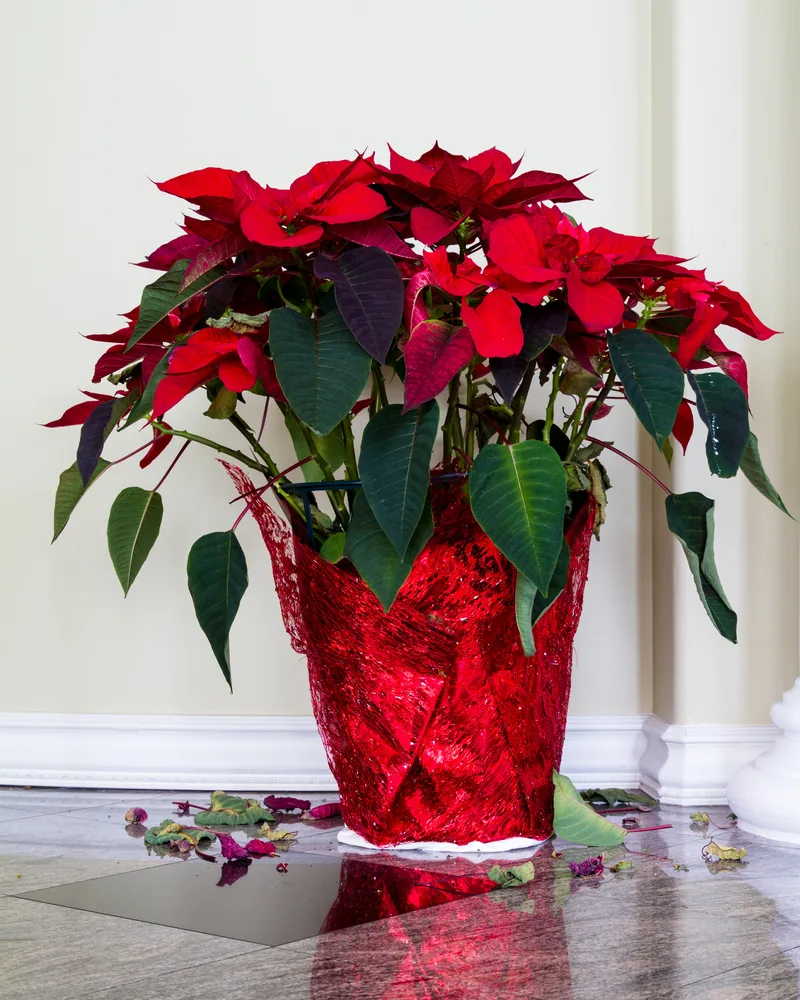
Just continue to water your plant when it needs it and keep it in bright, indirect sunlight in temps between 60-70 degrees F.
Poinsettias don’t like wet feet, but they appreciate thorough watering. Water the plant when the first inch of soil is dry, but don’t let the soil dry out completely between waterings. It’s also a good time to ditch the fancy wrapping that came around the nursery pot, as sitting in standing water can lead to root rot.
In April, after your poinsettia has had a long winter’s nap, prune back the old growth from last year so that the stems are around 6” long.
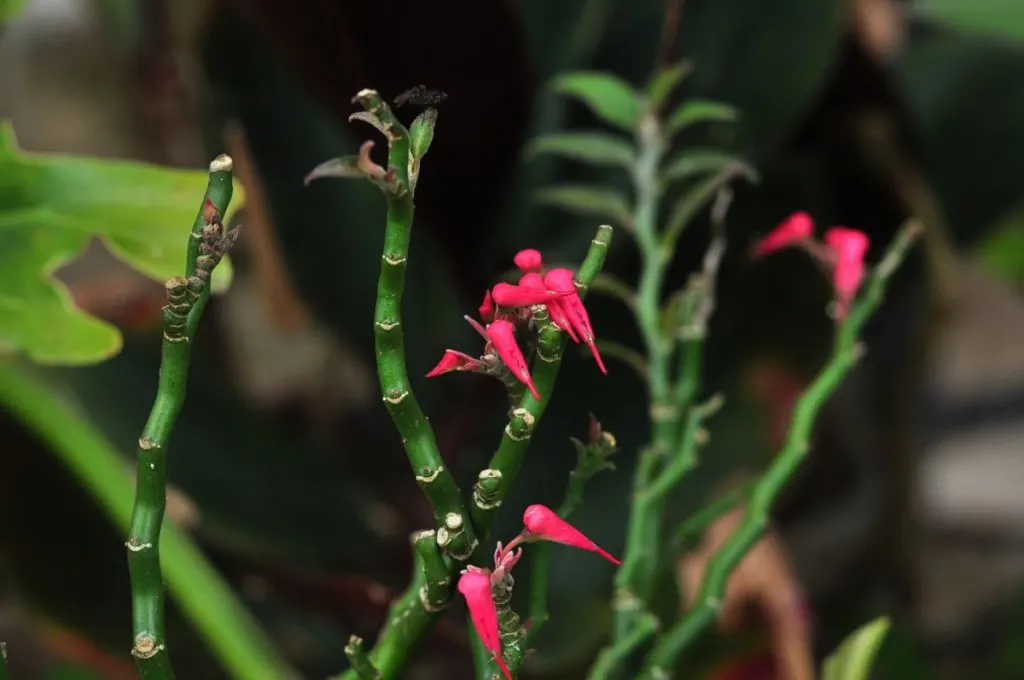
You should also begin fertilizing your poinsettia once a month and repot it in a new pot no larger than 2” bigger than the nursery pot it came in. It’s always important to choose a pot with a drainage hole and be sure to use a quality potting mix that drains easily.
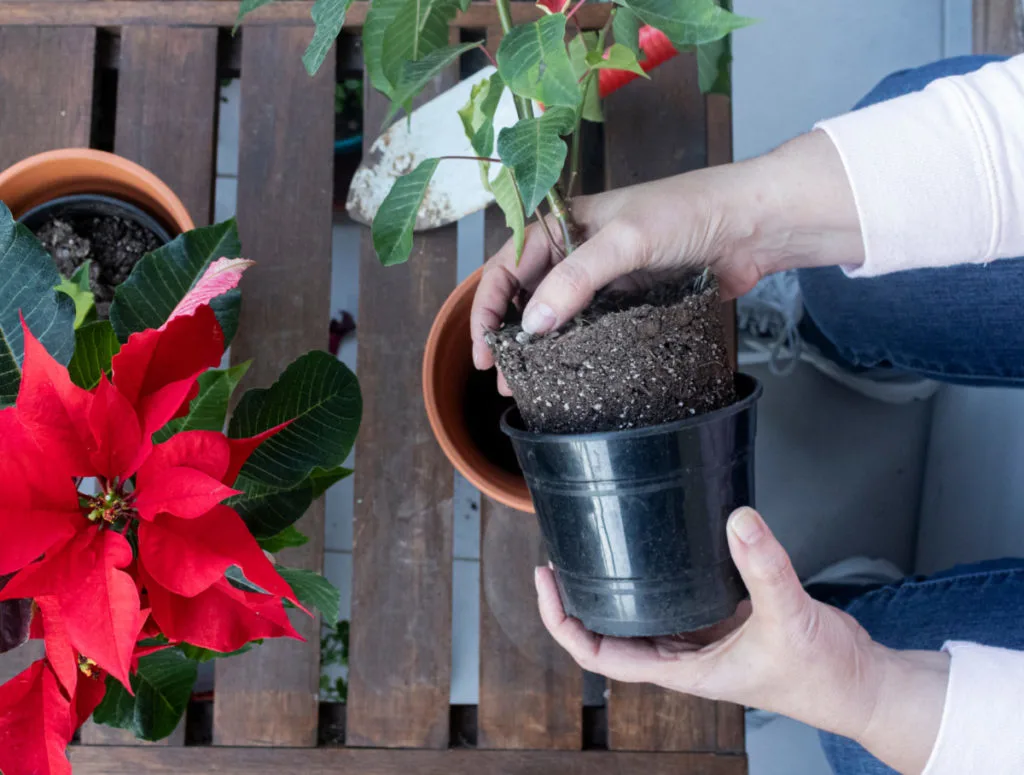
You may notice that this is very similar to what you need to do to regrow your poinsettia and get it to turn red at Christmas. But after this point is where things start to differ.
If you’re looking to regrow your plant to enjoy its beautifully colored bracts over the holidays, you would start pinching back some of the new growth to encourage your plant to grow bushier.
But since we want cuttings, we will let the plant keep putting out new growth.
Taking Cuttings
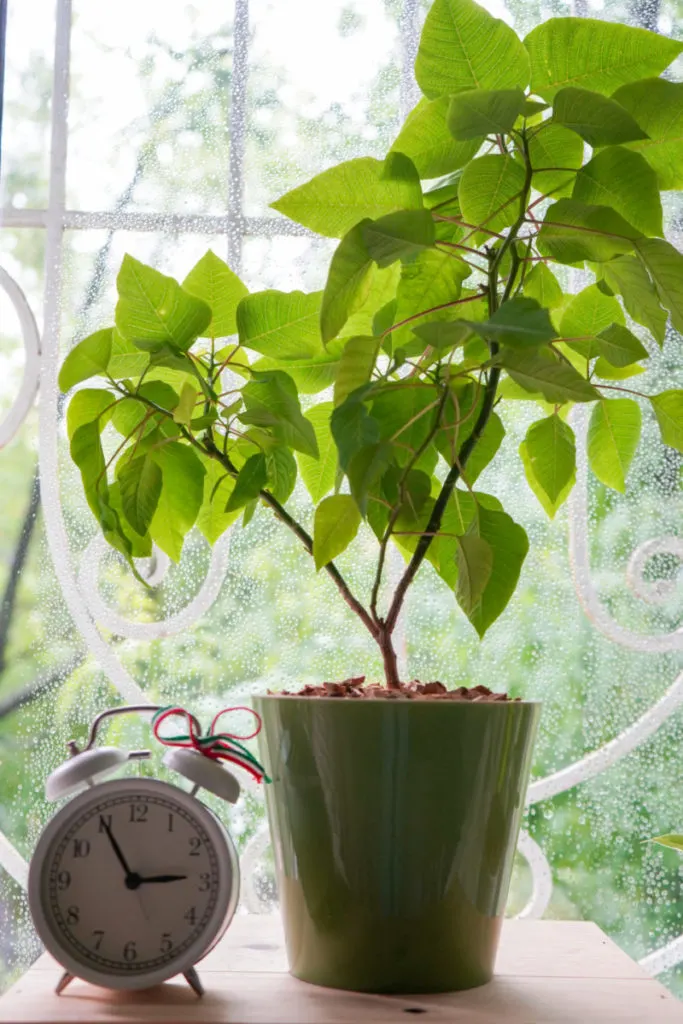
Once the poinsettia has new stems over 4” long, you can snip them off to propagate. As always, when taking a cutting from a plant, it’s important to use sterile equipment, so you don’t introduce disease. Choose a stem that is between 2”-4” long and has at least two new leaves on it.
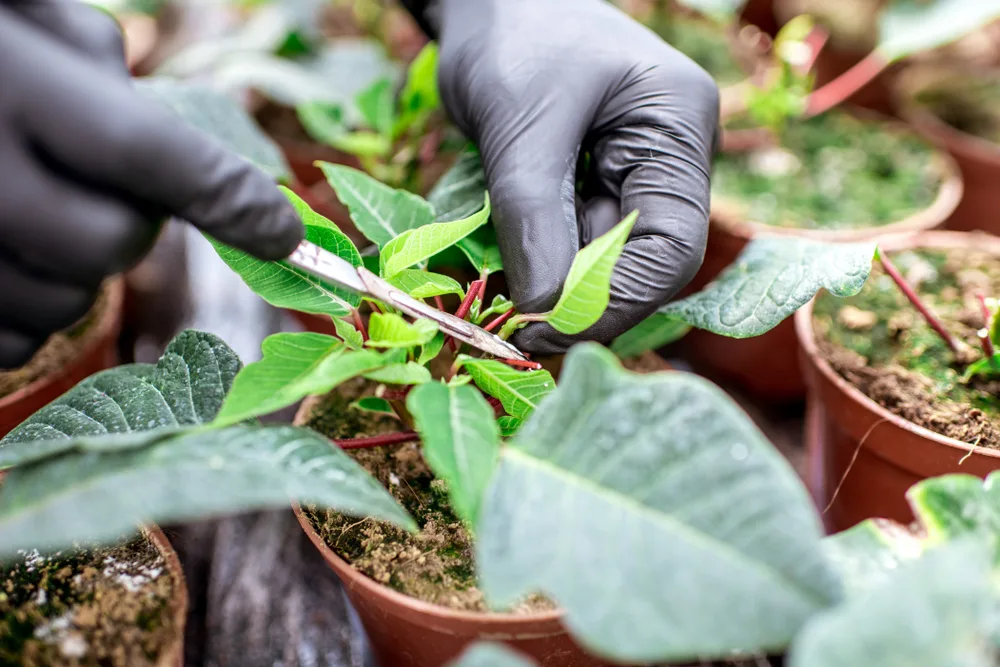
You may wish to use a rooting hormone to encourage healthy root development. Lindsay wrote about five common items that can be used in place of commercial rooting hormones.
5 Easy To Find And Scientifically Backed Natural Rooting Hormones
Place your cutting in a pot filled with moist coconut coir or a seed starting mix. Half of the cutting should be immersed in the soil.
Humidity and Bright Light
The key to getting a poinsettia to take root is a combination of good humidity and very bright (but not direct) light. Cover your cutting with a clear plastic bag (like a sandwich bag) to trap in the moist air and place it somewhere where it will get the most light.
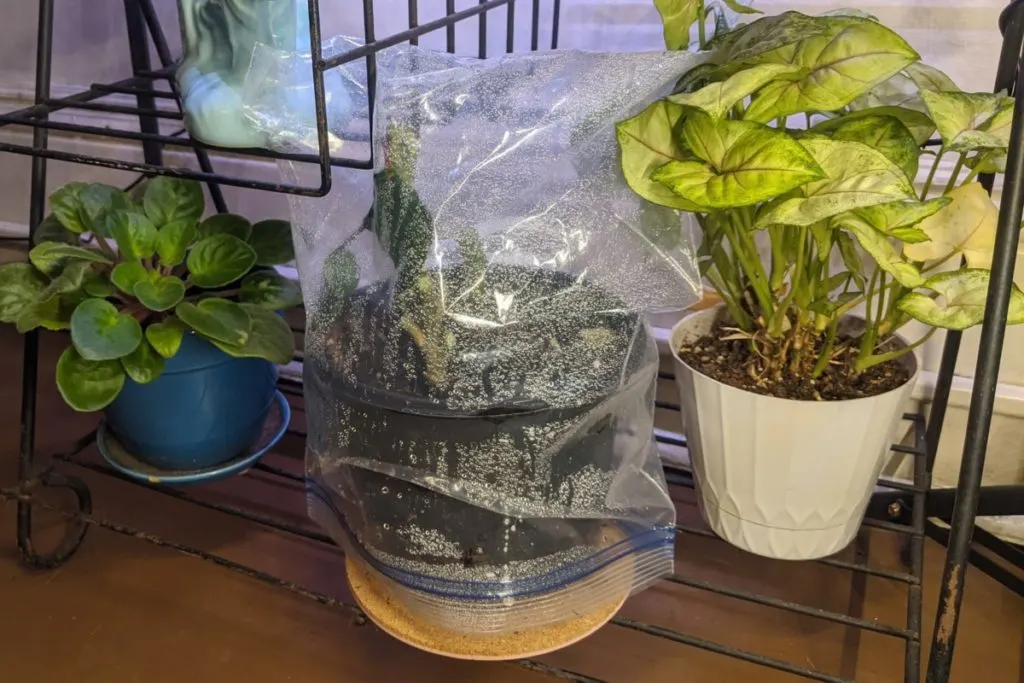
To improve your chances of success, you may also wish to use a grow light. Check out the article below for help choosing the right light.
LED Grow Lights – Know the Truth vs the Enormous Hype
Mist the soil and leaves of your plant as soon as it begins to dry out to maintain the humid atmosphere the plant needs. It’s important that the plant stay warm too, between 60-70 degrees F. Cooler temperatures with all that moisture could cause the cutting to rot.
After about 3-4 weeks, the plant should have developed roots and a few more weeks after that; it will begin to put out new growth of its own. At this point, you can remove the clear plastic bag and begin fertilizing the plant once a month.
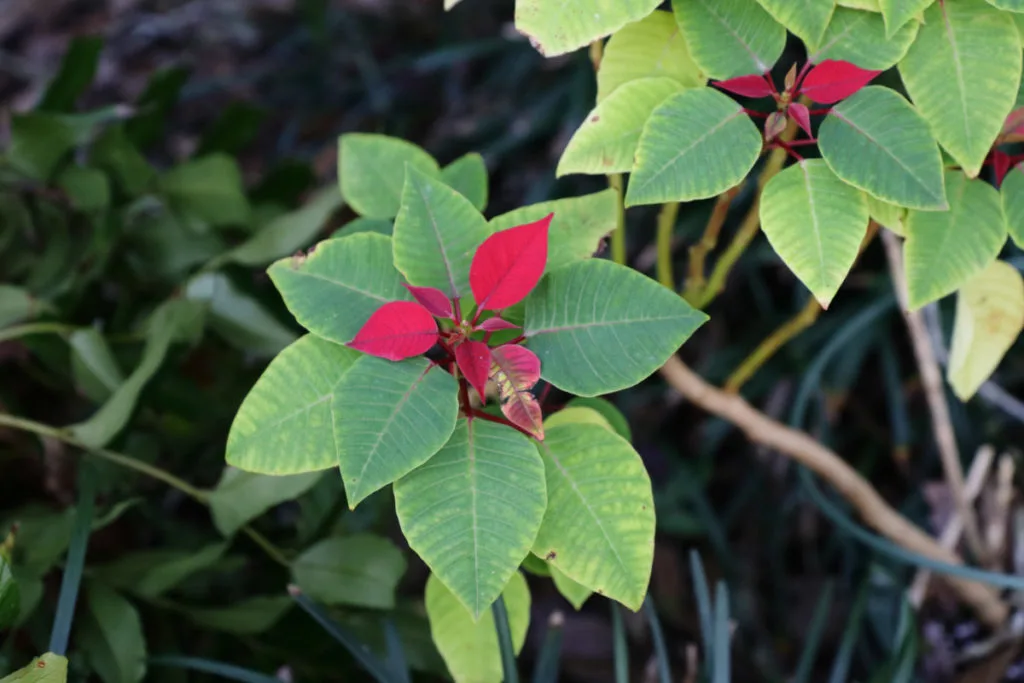
Water the plant as described above, and your new poinsettia will thrive. Once outside temperatures stay above 60 at night, you can even move your new plant outside for the summer. If you want it to turn color in time for Christmas, bring the plant back inside in late September and follow the routine I’ve outlined in this article.
That’s really all there is to it.
While propagating a poinsettia might be more akin to propagating a tree rather than a houseplant, it’s still easy enough to do.
With a little effort, you could be giving homegrown poinsettia as Christmas gifts next year.
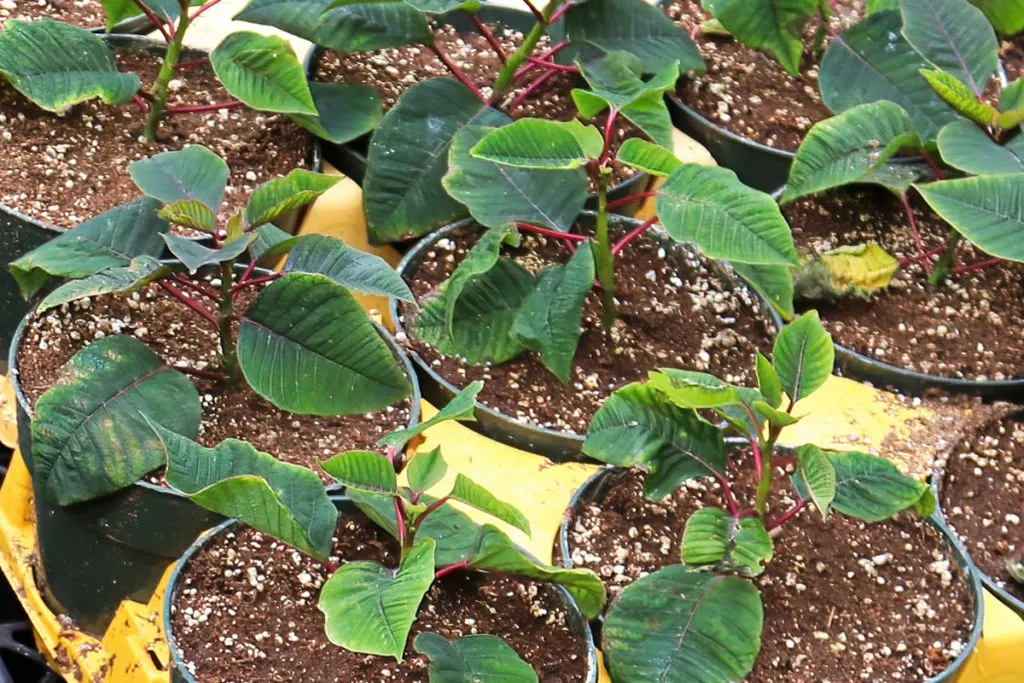

Get the famous Rural Sprout newsletter delivered to your inbox.
Including Sunday musings from our editor, Tracey, as well as “What’s Up Wednesday” our roundup of what’s in season and new article updates and alerts.

